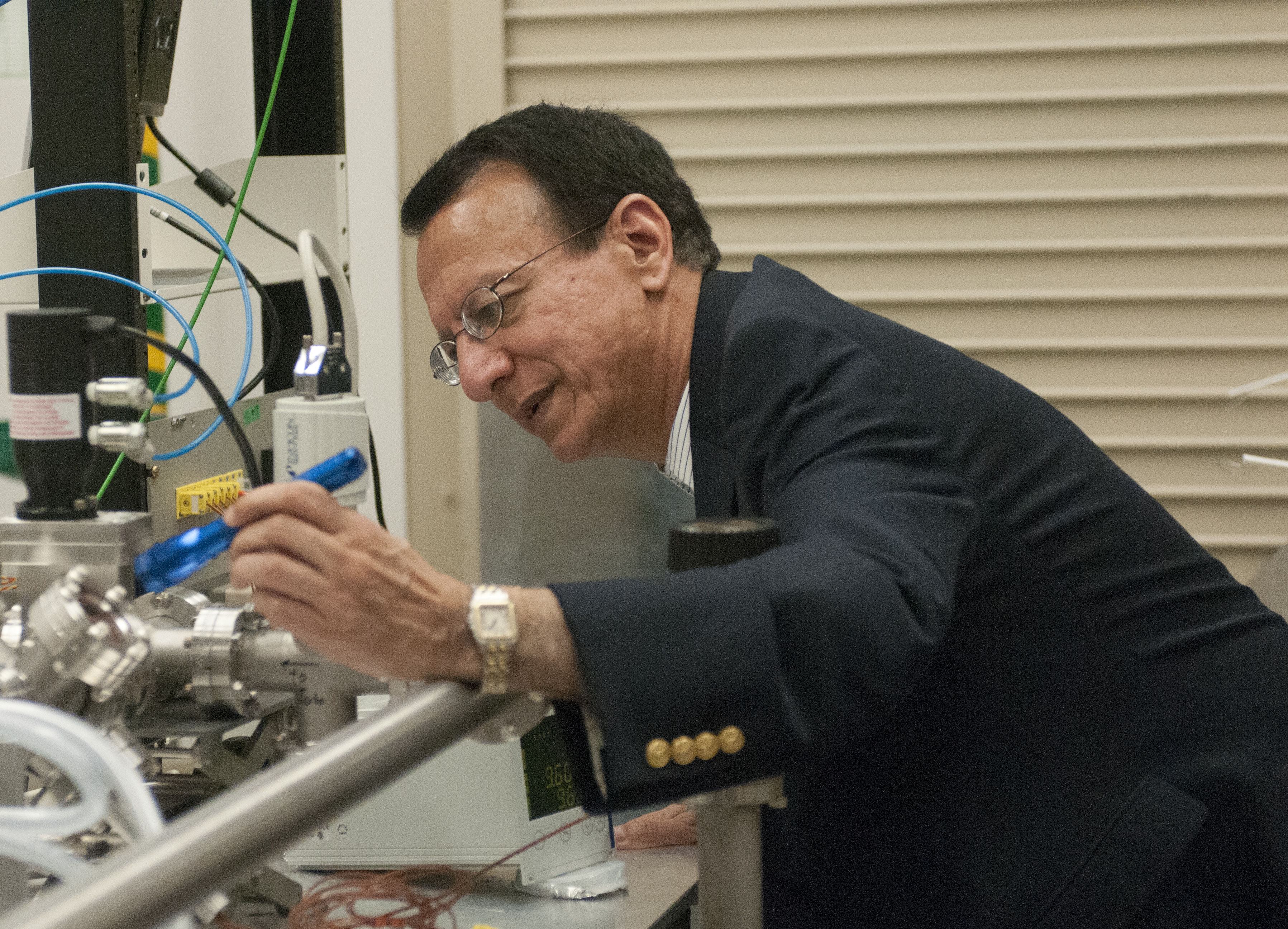UCLA professors elected to National Academy of Engineering

Chandrashekhar Joshi was the first person to develop an experimental program to create a plasma accelerator, which can accelerate electrons using waves produced in ionized gas. (Gaby Cabalza/Daily Bruin)
By Nikki Somani
Feb. 25, 2014 12:09 a.m.
Two UCLA professors were recently elected to lend their engineering expertise to government officials on issues of science and technology.
Chandrashekhar Joshi, an electrical engineering professor and Alan Willson, a professor emeritus in electrical engineering, were among the 67 new members elected to the National Academy of Engineering this year. The academy is an institution in which members give their expert opinions to government leaders, said Randy Atkins, a senior program officer at the academy.
In order to be elected to the academy, an engineer’s contributions must have a fundamental impact on society or the engineering field, said Frank Chang, distinguished professor and chairman of the electrical engineering department, who was elected to the academy in 2008.
Both Willson and Joshi said they were honored to find out that they were elected.
“It’s a very high honor,” Joshi said. “It’s not that you lobby to be a member. You can have an inkling that you’re being considered, but you don’t really know.”
Chang said it is very uncommon for any university or department to have more than one faculty member elected to the academy in one year.
“It’s lucky to get both of them elected in the same year,” Chang said. “Usually if (UCLA) gets one, we get very happy.”

Alan Willson
Willson’s research involves developing new methods to enhance digital signals, which are used in computers, cell phones and CD players.
When he came to UCLA 40 years ago, he created the first course on digital signal processing, which involves converting continuous signals, such as the sound of someone speaking, into sequences of numbers that can be recognized by a computer.
Willson first discovered his passion for computer science 57 years ago when he learned how to write computer programs at a railroad company in Baltimore on a Datamatic 1000, a computer that took up almost 1,000 square feet.
“I could see that there were lots of opportunities to do things that were of value,” Willson said. “It was clear that the world was becoming digital.”
Willson has also been involved in digital filtering, a process that separates the background frequencies in digital signals. It can be used to more efficiently measure electrical activity of the heart.
Chang said Willson was one of the first engineers to teach and study the processing of analog signals to digital signals.
“Professor Willson is one of the pioneer scientists in this area. He’s the first one to start courses at research universities,” Chang said. “He found cost-effective and efficient ways to digitize an analog signal into a digital format so that computers can read it.”
Chandrashekhar Joshi
Joshi spends his time trying to perfect a method of viewing extremely small pieces of matter that are a fraction of the size of a proton.
In 1984, Joshi was the first person to develop an experimental program to create a plasma accelerator, which can accelerate electrons using waves produced in ionized gas. By accelerating electrons in the device, researchers were able to view extremely small matter.
When Joshi and his colleagues first performed the experiment that accelerated electrons using the plasma accelerator, many of his colleagues did not believe it would work. They finally believed the project was successful when they saw that the image of the electron paths were what Joshi and his team predicted. Joshi bought his colleagues and students milkshakes to celebrate the triumph.
“There have been many moments of sheer joy,” Joshi said. “Because when you do research like this, it is really like nature revealing herself to you.”
By increasing the energy of the accelerated electrons, the plasma accelerator can allow scientists to view extremely small particles using a smaller, more affordable machine.
“We proposed (the plasma accelerator) and started it here at UCLA. From here, the effort has spread worldwide,” Joshi said.
Joshi and his colleagues are now working on increasing the energy of the electrons so the plasma accelerator will be able to perform state-of-the-art experiments to study the structure of matter.
“In all these large and complex scientific problems, a human lifetime is the time scale,” Joshi said.


